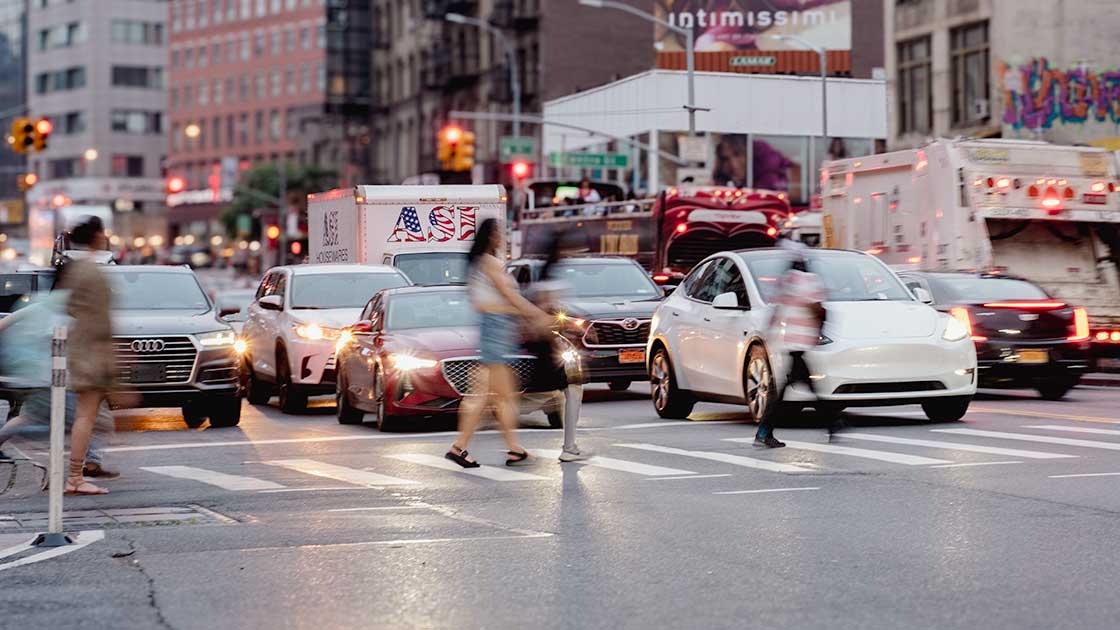Changing the clocks helps pedestrians but hurts motorists
April 11, 2024

Setting the clocks forward to better align the workday with the rising and setting of the sun makes pedestrians and bicyclists safer, though the net effect on overall fatal crashes is minimal, a new study from the Insurance Institute for Highway Safety shows.
“These findings won’t end the debate about daylight saving time,” IIHS President David Harkey said. “The benefits for bicyclists and pedestrians are important because that’s where the fatality numbers have increased the most over the past decade. However, they’re largely offset by an increase in crashes in which vehicle occupants were killed.”
The conventional wisdom is that Americans hate losing an hour of sleep when we switch to daylight saving time in the spring and — in the northern part of the country — don’t love how early the sun sets after the clocks are turned back in the winter. Meanwhile, citing sleep research and potential energy savings, Congress is weighing the benefits of the status quo against both permanent daylight saving time and permanent standard time.
To determine the effect of the current system on road safety, IIHS researchers analyzed fatal crash data for the five weeks before and after each time change over 2010-19. They then zeroed in on the crashes that occurred during the hours that the time change affected the level of light and separated those in which only motor vehicle occupants were killed from those that resulted in bicyclist or pedestrian fatalities.
When they considered all crashes that occurred between 4 a.m. and 10 a.m. and 3 p.m. and 9 p.m., whether a vehicle occupant or bicyclist or pedestrian was killed, the net effect on fatal crashes was minimal. In the five weeks after the fall time change, fatal motor vehicle occupant crashes decreased and fatal bicyclist and pedestrian crashes increased. Then, in the five weeks after the spring time change, fatal motor vehicle occupant crashes increased and fatal bicyclist and pedestrian crashes decreased. As a result, the overall effect was 29 more fatal vehicle occupant crashes and 26 fewer fatal pedestrian and cyclist crashes.
Time change has little impact on fatal crashes
Study times: 4-10 a.m. and 3-9 p.m.

The effects of the time changes were more pronounced when they looked specifically at the crashes that occurred in the early morning and late afternoon hours when the level of light changed because of the new time, however. The entire reduction in fatal bicyclist and pedestrian crashes and virtually none of the increase in fatal vehicle occupant crashes occurred during those time periods.
“There are several ways that the time changes could affect crash rates,” said IIHS Research Associate Amber Woods, the lead author of the study. “The disruption in sleep patterns could result in more drowsy driving or more people rushing because they’re running late. However, for bicyclists and pedestrians, the biggest factor appears to be the changing light conditions during key driving periods.”
This jibes with what we already know. Most pedestrian crashes occur during daylight hours, when the most people are out walking around. But most pedestrian fatalities happen at night.
Since 2009, when pedestrian deaths hit an all-time low, they’ve risen 80%. Bicyclist fatalities have risen 75% over approximately the same period. As a result, bicyclists and pedestrians now account for nearly a fifth of all traffic fatalities.
Addressing the problem with the clock is complicated, this study shows. Obviously, any gains associated with an extra hour of light on one end of the workday may be tempered by an extra hour of darkness on the other end. For unknown reasons, the effect on vehicle occupant fatalities is also opposite to the effect on pedestrian and bicyclist fatalities.
“Although daylight saving time doesn’t seem to be an unequivocal safety win, this study reinforces the importance of visibility for preventing pedestrian and bicyclist crashes,” Harkey said. “Better lighting, especially at crosswalks, improved headlights, and reflective or light-colored clothing can help protect people when the sun goes down — whatever time that may be.”